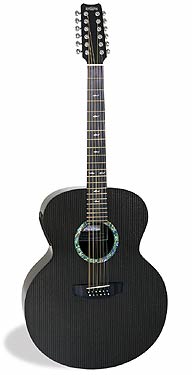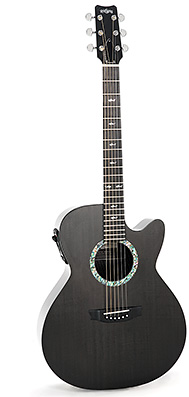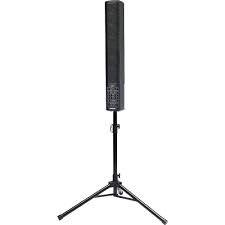INSTRUMENTS, STRINGS, PICKUPS,
MICS, RECORDING, ETC.
INSTRUMENTS

The "Sifel Night Sky" by Joe Knaggs and Pearl Works is an amazing guitar.
This project was in the works for many years and finally the guitars were born in early 2016.
I'm usually not one to have lots of inlay on my instruments, but every piece on this one has some significance
as a tribute to my dear friend and master pearlworker Larry Sifel who died in 2006. His wife Jean had these
beautiful instruments commissioned to fulfill one of Larry's last wishes and I couldn't be more delighted to be
able to own one and play one. It's become one of my favorite guitars and it's hard to put down.

Detail of 12th fret design

Detail of the elaborate inlay around the soundhole.
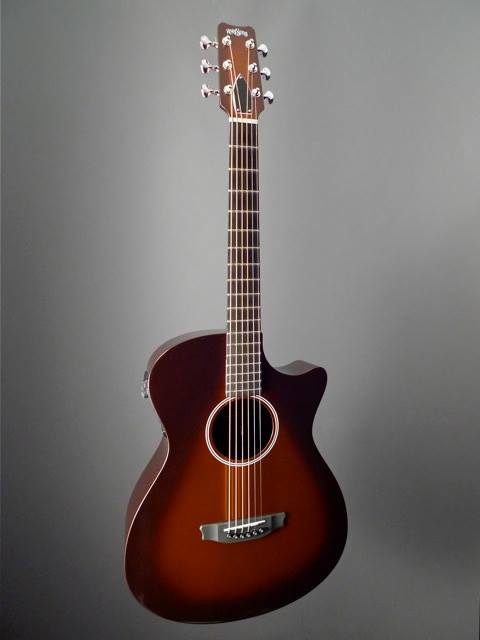
RainSong APLE - Al Petteway Limited Edition


Exquisite Madagascar Rosewood on the sides and back of the Circa OM 28 by John Slobod

Martin Custom Shop 00-42
 Thompson 000-12 BA
Thompson 000-12 BA

 Tippin Crescendo
"Al Petteway Signature" Circa 000 Cutaway
Tippin Crescendo
"Al Petteway Signature" Circa 000 Cutaway


Two guitars by Larry Sifel, the Sifel "Petteway Cutaway" and the Sifel "Dryad"


Martin 0-28
1951 Martin 000-28
My
primary guitars these days are the Circa OM 28 and Circa 000 maple made
by John Slobod, the Knaggs "Sifel Night Sky", and the Martin 00
42. Between them,
they encompass everything I've ever wanted in a guitar.
Responsive, light
and easy to play. With the K&K pickup installed and running
through a Grace preamp, It's hard to beat any one of these. The
Circa OM 28 is pretty much a copy of the 1929 OM 28 with the exception
of the neck rod which is graphite instead of ebony and the tuning
machines which are standard vintage style Waverly tuners as opposed to
the banjo tuners that appeared on the original. The
"Sifel Night Sky"
built for me by Pearl Works and Joe Knaggs, is an amazing tribute to my
dear friend Larry Sifel and I think of him every time I play it.
That's also true of my Martin 00-42 that was custom built from woods
hand selected by Dick Boak at Martin Guitars. Larry was special
to both of us and I've wanted a Martin like this for a very long
time. Larry's company Pearl Works did the inlay for this
instrument as well. This Circa 000 has a
slotted peghead and a 12-fret neck with a cutaway and very elegant
bevel. It's made of European Spruce and European Maple
I
am also very proud to have my own line of RainSong guitars. These are made
entirely of carbon graphite and are outfitted with the best pickup and
mic technology available today. It's the ultimate travel guitar
and every sound man I've worked with loves them. The
guitar at the top left is a Bill Tippin "Al Petteway Signature Model"
made of
Brazilian Rosewood and Alpine "Moon Harvested" Spruce. It is one of the
best
guitars I've ever played and I've played a lot of them at Dream
Guitars. It has
an armrest bevel and bevels on the heel and cutaway. I feel like I now
have the perfect complement to my other guitars. The Tippin has
now
become Amy's primary instrument and I've been using the OM made by John Slobod and the Martin 00 42.
John exhibits his
guitars at the Swannanoa
Gathering Guitar Week. As
soon as I played a note on this guitar, I knew it was made for
me. The sound
was what I have been looking for and it fit my hand
perfectly. The
one-of-a-kind "Petteway Cutaway" was designed and built for me by Larry
Sifel. I used this guitar on all of my albums through
Midsummer Moon and then again for the Winter Tidings CD and the Mountain Guitar CD. The back and sides are European maple and the top is European spruce. The
guitar was restored and repaired by Master Luthier Bill Tippin in
the spring of 2007 and is now back in my hands after many, many
years. The 1931 Martin 0-28 is
an amazing guitar with lots of mojo. I love playing this one
around the house and it has inspired quite a few Ragtime style tunes.
I feel extremely fortunate to have such fine hand made guitars to play and they inspire me every day.
RainSong Guitars - From left to right, JM 3000 12-string, Concert WS-1000, SG Shorty 12-fret
Amy and I play Rainsong Guitars regularly at home, on recordings and on stage. They are great for recording
because of their exceptionally clear and balanced tone. They can be EQ'd to sound like practically any wood guitar.
We used RainSong guitars on our Land of the Sky CD and the Mountain
Guitar CD, along with our expensive wood guitars. Can you tell
where?
The new Concert models have raised these instruments to the next level with the warmer tone of the new top design.
RainSongs
never need adjusting, rarely need tuning and you can leave them in the car in any weather.
Simply amazing instruments with great tone and a wonderful feel.
All of my
early Maggie's Music recordings featured my Sifel Cutaway with maple
sides and back. On "Racing Hearts" I used an Olson SJ
with a cedar
top and Indian Rosewood sides and back in addition to a rosewood
cutaway made by Larry Sifel. The Olson belonged to
singer/songwriter Cheryl Wheeler who was nice enough to let me use her
guitar "Osgood" for a while. The Sifel is one of
three that I've used on my recordings. On "Gratitude", I played
the Rosewood Sifel Cutaway and a Brazilian/Cedar Olson that was lent to
us by another of our favorite singer/songwriters, David
Wilcox. Amy played two
different
Brazilian rosewood Olson SJs that David loaned us. One with a
rosewood neck and spruce top
and one with a mahogany neck and cedar top.
Amy
and I both
purchased guitars from Kevin Ryan after those CDs were
recorded. Amy had a Nightingale with a Boznian spruce
top
and Brazilian rosewood sides and back. I used a Brazilian/Cedar
Mission
Grand Concert for my Shades of Blue recording and Steve Baughman used
that same instrument on the "Celtic Summit" album with Robin
Bullock. I used a Brazilian/Boznian Spruce "Nightingale" on the DVD
I recorded for Solid Air
Records and Warner Bros. Publications. It's tone is rich and complex
with lots of bass and plenty of high overtones. That guitar was
also played on "Acoustic Journey," "Land of the Sky," and "Winter
Tidings" and has since been sold.
The
guitar I used on Caledon Wood is the Larry Sifel dreadnought "Dryad"
that I played in concert for over ten years. It is arguably the best
sounding instrument in its class that I've ever played. It was
returned to Jean Sifel in 2014 in order to be a part of the Pearl Works
museum.

My Live Setup includes a Grace Design Alix preamp, a Strymon Blue Sky reverb and a Boss TU-3W Tuner
We use K&K Pickups in our guitars, mandolins and harp and an Audio Technica AT831b microphone for Amy's dulcimer. I use
a Grace Design "Alix" preamp for my guitars and Amy uses the Radial PZ-PRE Acoustic
D.I. preamp for her instruments. The
L.R. Baggs
Para-acoustic D.I. box is still our choice for the harp or when we need to run off of phantom power. Two of our RainSong guitars have
built-in Fishman pickup systems that sound really good. The RainSong APLE has a Fishman Premium Blend system that sounds
amazing and the Al Petteway Special Edition (APSE) has a L.R. Baggs Stage Pro Anthem installed. We
still run these through the external preamps, even though it's not
really necessary. It gives us more control over the balance and
tone and allows us to send the sound person one signal for each of us,
even though we use numerous instruments on stage. For a while, we
used our Humphrey acoustic guitar amps as
stage monitors and sent our
individual instrument signals to the sound person from the XLR out on
the backs of the amps. You can't really do any better than a
Humphrey amp for perfect tone balance on an acoustic guitar, but they
got to be a bit heavy and delicate for road work. So we ended up
purchasing two of the Fishman SA220 acoustic amp/PA systems.
These are great for any size room that we play and if I have to do a
solo gig and need an amp or small P.A., just one of them is all I need.
We
own an Appalachian dulcimer built
by Tom Fellenbaum and an Old-Time banjo built
by Lo Gordon. I
don't play electric guitar very often, but when I do, I like to
use an old Stratocaster that I built from spare parts that is
outfitted with custom pickups, wound by Joe Barden, through my 1960's Ampeg SB-12 flip top amp. Both sound
great. For recording, I also use a Rob Allen MB-2 Fretless acoustic bass guitar.
For live performance, Amy uses Neumann and Earthworks microphones and I use whatever is available, generally Shure SM beta 58s.
Here's
a photo of me and Paul Reed Smith jamming at the Grand Opening celebration of
Pearl Works in Southern MD. quite a few years back. I'm playing the Sifel Rosewood
Cutaway. This guitar was given
back to Jean Sifel after Larry's untimely death in May, 2006. I
still play the maple "Petteway Cutaway" and I think it will always
be my all-time favorite guitar.

STRINGS &
ACCESSORIES
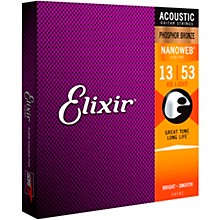
I use the Elixir Phosphor Bronze HD on all of my guitars. Amy prefers the 80/20s.
We also use Elixir nanoweb strings on our mandolins
I haven't found another string that is as consistent or has such perfect intonation.
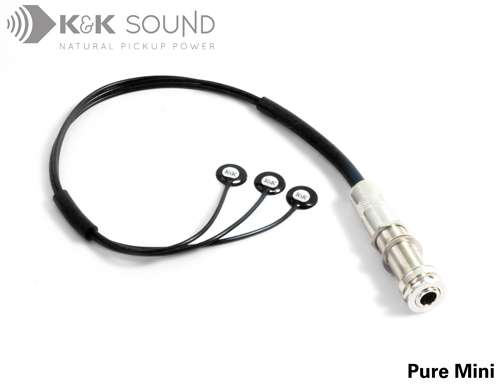
We use the K&K pure mini pickups in all of our instruments and they sound perfect.

G7th Heritage Capo
I
use the Heritage model capo by G7th. These
are the only capos that automatically adjust to the fretboard radius on
any guitar. You can slide them back behind the nut when they are
not in use and they are very lightweight. The bumpers along the
sides keep the capo from scratching the neck.
Amy also has a custom G7th Heritage capo, but she also likes the Planet Waves NS Capo Tuner which is also strong enough
and long enough for capoing high on the neck, but has a tuner built
in. If I'm playing an acoustic concert and need a tuner, I attach
the micro headstock tuner. It practically disappears on the
headstock and it works really well.

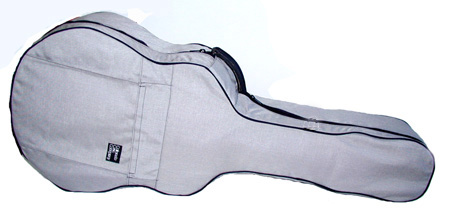

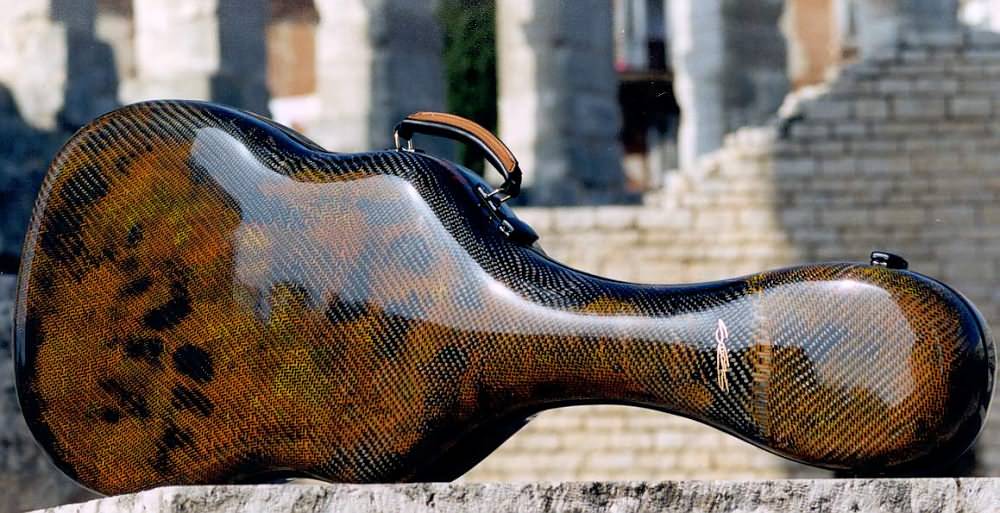
Karura
00 Case
Colorado Case
Cover
Karura 000 Case
Accord
Case


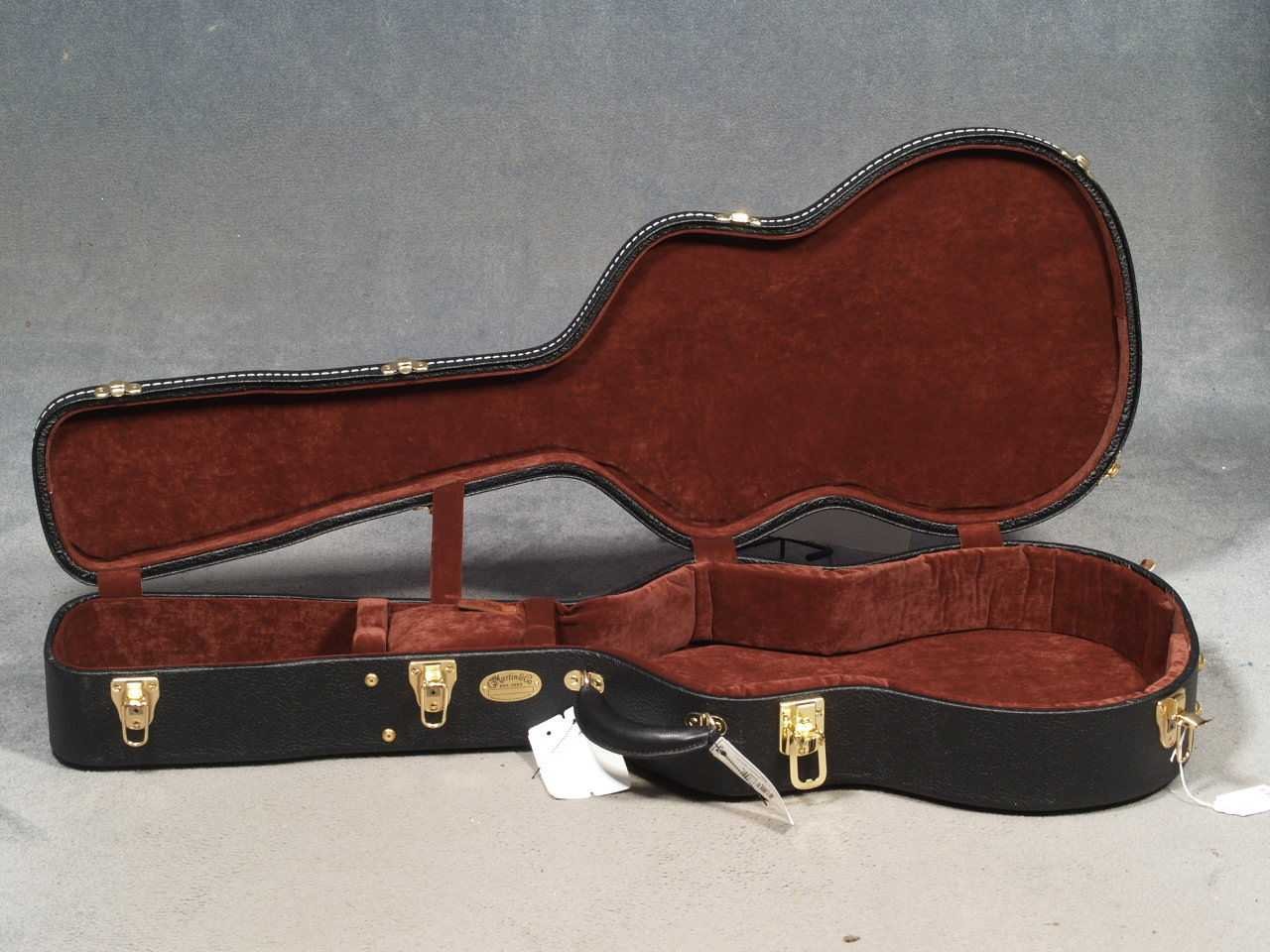
Visesnut , Harptone and Martin Cases
My
Circa 00 and my Tippin are both in cases made by the Karura Case
Company in Bangkok, Thailand. This is definitely one of the best
cases
you can buy. It's made of a carbon fiber composite material that
makes it lightweight and extremely protective. My new Circa
guitar needed a good case and I ended up purchasing a Visesnut case
that has an adjustable interior size. This case has become my
number one flight case for any of the 000 or OM sized guitars I
use. The Visesnut also has a padded thermal case cover and straps
that are quite comfortable. For the rest of our cases, we use
Colorado Case
covers, especially when flying. You can zip these
covers to completely cover the latches and elminate the need for taping
them down. They also offer an extra layer of thermal protection
in hot and cold weather. We often use gig bags for the RainSong
guitars since they are practically indestructable. I love the new
vintage style cases by Harptone and Martin and have them for a couple
of my guitars, but I only use them when driving to gigs.

photo by Amy White of my right hand position with "natural" nails
I
"pluck" the strings with my right
hand fingernails in combination with either my thumbnail or a plastic
thumb pick. Sometimes I feel like I have more control when using a
thumb pick,
especially when I'm playing harder, but I like the sound of the
thumbnail, since it is more balanced with the fingernails. I also use
the back of my
fingernails for strumming and "popping" effects. Hammer-ons and
pull-offs figure prominently in my playing, which makes it sometimes
difficult to tell which hand is "plucking" the notes. Recently Amy and I both
started getting "UV Gel" nails on our right hands. I keep my
nails filed and polished smooth around the edges so the attack on the
string is clear and pure . I
use very little force in my left hand and strive to keep both hands
relaxed at all times. I've found that I can get more power this
way. When
flatpicking, I like to use a heavy pick, preferably tortoise shell or
something that imitates it. When I'm backing up Irish jigs and
reels, I use a thinner pick.
RECORDING
We have a little home
studio setup that uses an Apple Mini computer and Digital Performer 9 for OS X with a API 1324+ 4 channel mic preamp and a MOTU
thunderbolt digital interface. We also have a MikTek CV4 tube mic, a
matched pair of MikTek C5 microphones, a matched pair of
Sennheiser MKH-40
microphones and a matched pair of AKG 414B TLII's with C-12 capsules
installed
in
them. Our Boston grand piano (by Steinway) sounds wonderful in this
space. I record at 88.2 kHz, 32 bit floating. Billy Wolf
does all of our mastering at Wolf Productions in Virginia. My
most recent album was mastered by Billy and my good friend Greg Lukens.
In
the past, we used a vintage AKG C-24 stereo tube mic to record the
guitar for "Whispering Stones," "The Waters and the Wild," and
some of "Midsummer Moon." We used vintage Neumann U-47
microphones on nearly all of the stringed instruments for "Caledon
Wood." Jim Robeson, the engineer at Bias Recording Company in
Springfield, VA placed the mics about 1-3 feet away from the guitar at
the spots that sounded best to him. We rarely ever used any EQ on the
guitar during recording or mixing. The project was mixed to 20-bit
digital using the Rane "Paqrat" and then mastered in 20-bit at Airshow
by Dave Glasser (the good ole' days of digital recording)
To
record the guitars at home for the first few self-recorded albums, I ran the
microphones directly into an ADAT XT-20 digital eight track recorder.
However, I've since purchased the Macintosh and MOTU 896HD Firewire
recording interface and I'm very impressed with the capabilities this
equipment offers me. Until recently,I
used a Mackie 1604 VLZ PRO mixer and a pair of Genelec 1029A's with the
Genelec subwoofer for monitoring. I still use the Genelecs but no
longer need the mixer since the new MOTU 896HD has a virtual mixer
built in. Headphone monitoring is done through a Rane HC6 and a
choice of Shure SRH840, Sony MDR-7506, AKG K 240 DF, AKG K 240, or Audio Technica
ATH-M40 headphones. My favorite mic preamp is the four channel API
3124+ . I also use Presonus MP20 preamps for electric bass and direct pickup signals
I
prefer to mic guitars by placing one microphone facing the 12th fret
and the
other placed about a foot from the lower
bout, pointed behind the bridge. I've also used the XY and ORTF
placement for close micing where phase issues may occur. I've
been experimenting with
mixing and matching different mics and mic placements and have come up
with some pretty
great
results but I still prefer to use a matched pair. I
borrowed a pair of
Senken Mics from Cathy Fink and Marcy Marxer to record the "Celtic
Summit" CD by Robin Bullock and Steve Baughman. They were an excellent
choice for recording Steve. On my solo guitar album "It's Only
the Blues" I used the two AKG's with C12 capsules and added the
MikTek CV4 as a center mic. The results were amazing. I
also used this technique to mic Amy's guitars on "Home Sweet
Home." For my most recent project, The Collector's Passion, I
recorded on location using an iPad Pro and a Roland interface. I
used the ORTF placement for the mics and recorded using the Auria
app. The results were so good that it changed my concepts of
recording solo guitar music.

Mixing with Jim Robeson using the wonderful API console at Bias Recordings in Springfield, VA
- Photo by Amy White
Fairewood Studios - Takoma
Park, MD

Fairewood Studios - Fairview, NC

Fairewood Studios - Weaverville, NC
(In the midst of recording Robin Bullock's mandolin arrangements of the Bach Cello Suites)
"Racing Hearts" was mixed by Jim Robeson
at Bias Recording in Springfield, VA. This time we mixed to 24-bit digital
and then mastered in 24-bit with Bill Wolf at Wolf Productions in Falls Church,
VA. "Gratitude," our Indie-winnging duo guitar project on James Jensen's Solid Air
Records was also mixed and mastered the same way with the same engineers. Those guys are so good!
"Shades of Blue" was mixed at home using
MOTU's Audiodesk software and mastered with Bill Wolf.
"Golden
Wing," "Acoustic Journey," "Land of the Sky," "Winter
Tidings," "Dream Guitars, Vol. I" "High in the Blue Ridge," "It's
Only the Blues," and "Home Sweet Home" were all recorded and
mixed at home, using Digital Performer software. Mastering was
done by Bill
Wolf once again. "The Collector's Passion" was recorded "live" on location and mastered by Bill Wolf and Greg Lukens.
I never use any processing or EQ when tracking. I'd rather leave
that till the mixing stage and even then, I use very little, if any, EQ
and minimal processing. My computer software has a number of wonderful
processing plug-ins, including the new ProVerb reverb plugin. I now use it instead of my Lexicon MPX-500
for overall reverb effects. I've been using the computer for mixing all
of our recent projects. We still like to send our files to Bill Wolf's mastering
suite at Wolf Productions for the final mastering before
manufacturing.
TUNINGS
My
favorite tunings are EADGBE,
DADGAD, DADF#AD, CGCGCD, CGDGAD, and DGDGBD. I've experimented with many
tuning
variations but find myself returning to DADGAD as my "standard"
tuning. I've also been experimenting with the use of partial
capos. All of my capo positions and tunings are listed in the
liner notes of my solo albums and on the transcriptions in my
books. On "Racing Hearts," I used DADGAD tuning exclusively, so I
didn't bother listing it. I did use a partial capo across the
first four strings at the second fret for "Hidden Wings." I just
couldn't figure out any other way to play it at the time. Now I
can play it in CGDGAD. Everything else is
straight DADGAD either open or with a capo. For the duo guitar
album I stayed in DADGAD most of the time, but snuck back to standard
for a couple of the jazzier numbers. Amy also played primarily in
DADGAD but she wrote some really cool tunes in a tuning she learned
from David Wilcox: BGDGBD. She put a partial capo on the
fourth fret and used the low B as her root. Another variation she
used was BGDGAD. On the "Shades of Blue" album I used DADGAD and
Standard tunings, but I also used DGCFAD(standard tuning down a whole step) for a couple of tunes to give
me that slinky electric feel. The solo CD "Dream Guitars
Vol. I & II" feature Standard and DADGAD
tuning primarily, but there are tunes CGDGAD. "It's Only the
Blues" is almost entirely in DADGAD except for "This Just In" which was
in CGCGAD. "The Collector's Passion" features all of these tunings as well as CGCGCEb for one tune.
Al & Amy-Home ~ Biography ~ Discography ~ Technical Stuff ~ Reviews ~ Awards
F
a i r e w o o d S t u d i o s
P.O. Box 1093
Weaverville, NC 28787














